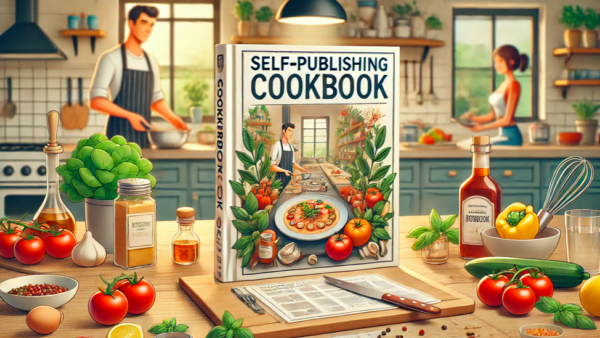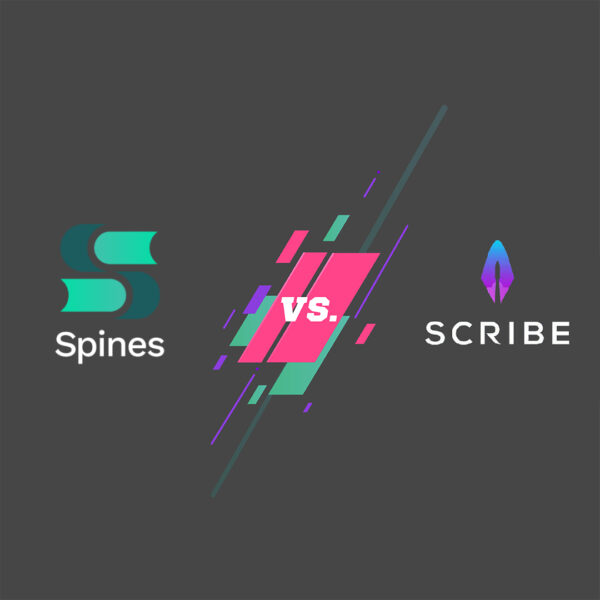Let’s face it: the idea of publishing a book can feel like trying to climb Mount Everest without a map—or even a decent pair of boots. You’ve got an idea, maybe a few scribbled notes, and a dream of seeing your name in print. But then come the questions: Who will publish it? How do I even start writing it? Will anyone besides my Dad read it?
Relax. In 2024, self-publishing has transformed from a daunting mystery into an accessible, rewarding adventure—especially for non-fiction writers. Whether you’re sharing life hacks, business strategies, or a guide to raising emotionally intelligent goldfish, self-publishing puts the power in your hands. Forget waiting months for a traditional publisher to respond or navigating the elusive world of literary agents. This is your book proposal or story, and you call the shots.
In this article, we’ll simplify the self-publishing process step-by-step, so you can focus less on the confusion and more on becoming a published author with a guide that stands out. Ready to get started? Let’s dive in.
Your Publishing Journey Awaits – Start NowStart Strong: Nail Down Your Idea and Audience
Every great book begins with a solid idea—but for non-fiction writers, it’s not just about what you want to say. It’s about what your audience needs to hear. The clearer and more marketable your idea, the better your chances of captivating readers (and, let’s be honest, selling books).
Start by asking yourself: What problem does my book solve? Who will benefit most from my insights? A well-defined target audience is your compass, guiding every decision from content to marketing. Writing a business guide for entrepreneurs? They’re likely looking for actionable strategies and straight-to-the-point advice. Tackling self-help? Your readers may prefer relatable stories, a motivational tone, and a more conversational approach.
Market research is your secret weapon here. Dive into similar books in your genre to identify trends, gaps, and opportunities. What do the peer reviews praise or criticize other books for? What do readers consistently ask for? Platforms like Amazon, Goodreads, and social media are treasure troves of reader expectations.
By aligning your idea with a specific audience’s needs, you’re setting the foundation for writing a book that not only resonates but also stands out in a crowded market. Remember: It’s not about trying to please everyone—it’s about deeply connecting with your potential readers.
Write Like a Pro: Crafting the Perfect Manuscript
Writing a non-fiction book isn’t about waiting for inspiration to strike—it’s about setting a plan and sticking to it. Start by creating a realistic timeline for your writing process. Break your nonfiction book into manageable chunks—chapters, sections, or even paragraphs—and schedule specific deadlines. Treat it like a project, not a passion that’ll happen “someday.” Spoiler: “Someday” never comes without a plan.
Once your draft is complete, it’s time for feedback. Enter the beta readers—trusted individuals who represent your target audience. Their honest opinions can reveal weak spots, confusing sections, or hidden gems you didn’t know you had. Pair this with a peer review from someone knowledgeable in your field for a deeper dive into your content’s accuracy and tone.
Before jumping into full-blown editing, focus on polishing sample chapters to set the tone and quality for the rest of the manuscript. These chapters are especially helpful if you’re considering pitching to traditional publishers or collaborating with experts.
Finally, decide whether to invest in a professional book editor or use DIY editing tools. Professionals in book editing bring expertise and polish that’s hard to replicate, but tools like Grammarly or ProWritingAid can help if you’re on a budget. Either way, don’t skip this step—your manuscript deserves the extra shine.
Crafting a book isn’t about perfection from the get-go; it’s about iterative improvement. Take it step by step, and your manuscript will transform into a polished, ready-to-publish masterpiece. Spines provides an unmatched experience with this choice, assisting with every step of the process from editing to cover design and beyond.
From Manuscript to Masterpiece: Cover Design and Layout
They say you shouldn’t judge a book by its cover—but let’s be real, everyone does. A well-designed cover isn’t just decoration; it’s your book’s first impression. Investing in a professional book cover designer is one of the smartest moves you can make. They know how to combine visuals, typography, and market trends to create a cover that grabs attention and screams, “Pick me! Choose me! Read me!”
When planning your cover design, make sure it matches your book’s tone and topic. Writing a business guide? Keep it sleek and professional. Tackling self-help? Warm and inviting works best. Your cover should tell readers at a glance what they can expect from your book—and convince them to dive in.
Layout matters too. A clutter-free, user-friendly format for both ebooks and print editions can make the reading experience seamless. Use clear fonts, logical headings, and consistent spacing to guide your readers effortlessly through your content.
And here’s a fun (if tragic) anecdote: A well-researched non-fiction book about financial success once had a cover featuring a cartoon piggy bank with googly eyes. Needless to say, no one took it seriously. Don’t let a bad cover undermine your hard work! Your book deserves to look as professional as the content inside.
Your Publishing Journey Awaits – Start NowBuilding Buzz: Marketing Your Book Like a Boss
Publishing a great book is only half the battle—the real magic happens when you market it like a pro. A killer marketing plan is your secret weapon to getting noticed. Start by leveraging social media platforms to share behind-the-scenes writing moments, teasers, and release updates. Blogs are another fantastic tool; write guest posts or create content on your own site to connect with potential readers. And don’t underestimate the power of your author platform—build an email list to stay in touch with fans and keep them excited about your journey.
Book reviews are golden. They build credibility and boost your book’s visibility, so don’t be shy about asking beta readers to leave honest reviews on platforms like Amazon or Goodreads. The more reviews you have, the easier it is for new readers to trust your book’s value.
Want a personal touch? Partner with your local bookstore for events like signings or readings. These events not only help sell books but also create memorable connections with readers.
Finally, use market analysis to price your paperback and ebooks competitively. Research similar titles and books in your genre to find the sweet spot that balances affordability with perceived value. A well-priced book with smart marketing behind it? That’s a recipe for success.
With the right strategies, your book will go from “just published” to “must-read” in no time!
Distribution Done Right: Where and How to Sell Your Book
You’ve written and polished your book—now it’s time to get it into the hands of readers. Choosing the right self-publishing platforms is key. Amazon KDP dominates the market, offering access to millions of readers with tools for both ebooks and print. If you want broader distribution, platforms like IngramSpark can get your book into libraries and independent bookstores. Spines is also a wise choice for people looking for more constant support and assistance as they help guide you through the process and can distribute through Amazon KDP in order to get your book to reach all the millions of readers they have access to.
Unlike traditional publishing, where publishers control distribution, indie publishing gives self-publishers full control over where and how their book is sold. No waiting for a traditional publisher to greenlight your work—you’re in charge of your book’s destiny.
To expand your reach, think beyond online sales. Partner with local libraries and bookstores to buy your books and make your book available in physical locations. Optimize your online search visibility by using strategic keywords in your book description.
Don’t forget the global audience. Ebooks are an excellent way to reach international readers without the cost of shipping. Use platforms that cater to those interested in multiple regions, and ensure your book is formatted for different devices and languages.
With the right distribution strategy, your book can reach readers from your neighborhood to the other side of the world. Global domination? Totally achievable.
Set Yourself Up for Success: Establishing Long-Term Goals
Publishing a book isn’t just about launch day—it’s about what comes next. Start by defining your publishing goals beyond getting your book into readers’ hands. Do you want to establish yourself as an authority in your field? Build a loyal readership? Or maybe just publish text to set the stage for future books? Clear goals will guide your post-publication strategy.
To stay relevant as a published author, keep the momentum going. Share updates, insights, or related content through newsletters and social media. Regular engagement helps you build a community of readers who are eager for your next move. Think of it as an ongoing conversation—your book was just the icebreaker.
Speaking of the next moves, consider creating spin-offs or complementary nonfiction books. Did your first book spark questions or open doors to new topics? Explore those ideas in follow-ups or even smaller guides to keep your audience coming back for more.
Remember, the whole nonfiction publishing journey doesn’t end with the final chapter—it’s a stepping stone to more opportunities, connections, and creative endeavors. Set your sights high, and your non-fiction guide could be just the beginning of a rewarding career as an author.
Your Publishing Journey Starts Here
When you self-publish your non-fiction guide, it doesn’t have to feel overwhelming. When broken into manageable steps—crafting a compelling idea, writing a polished manuscript, designing a standout cover, marketing smartly, and choosing the right distribution channels—the self-publishing process becomes not just achievable but exciting.
The hardest part is taking that first step. Whether it’s jotting down your initial ideas, researching your target audience, or reaching out to beta readers, every small action brings you closer to becoming a published author.
Imagine the joy of seeing your book in the hands of potential readers—whether on a local bookstore shelf, on an e-reader in a café halfway across the globe, on an online search, or shared in a social media post with glowing reviews. Your publishing journey starts now, and the world is ready to hear what you have to say.
Ready to make it happen? At Spines, we’re here to help indie authors every step of the way—from idea to publication. Join our community of empowered authors and start your journey today!
Your Publishing Journey Awaits – Start Now







